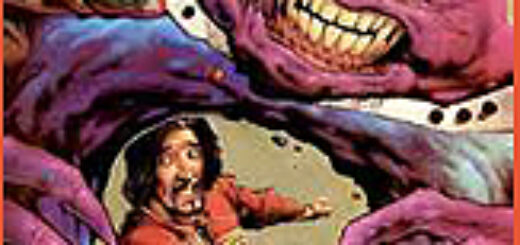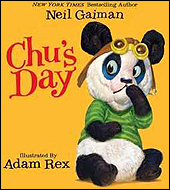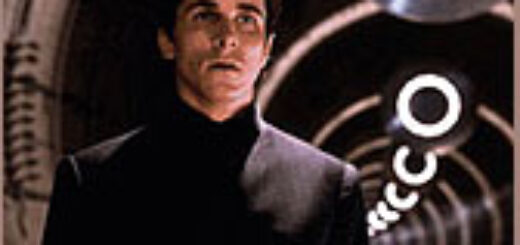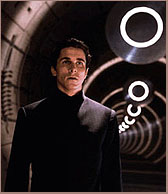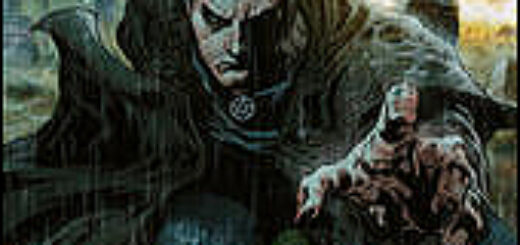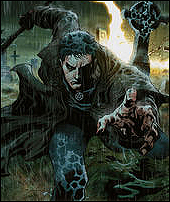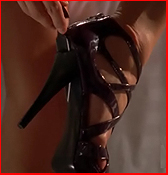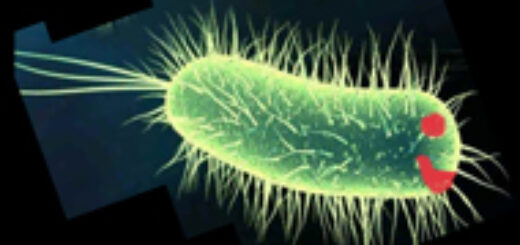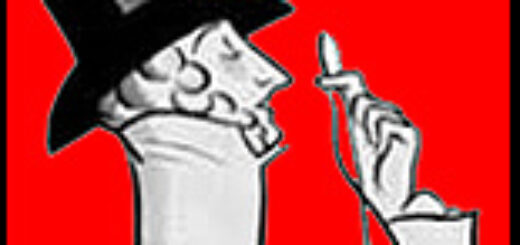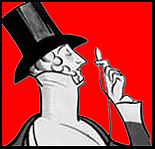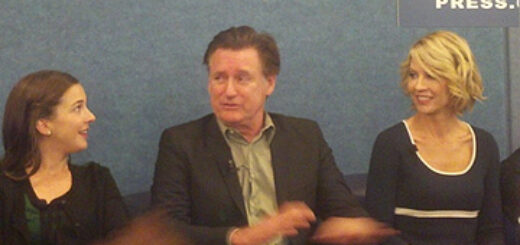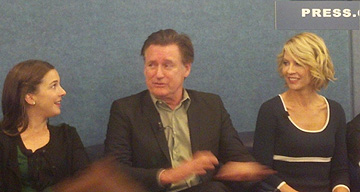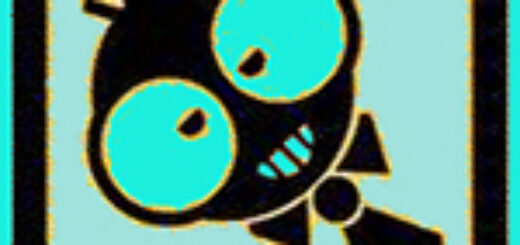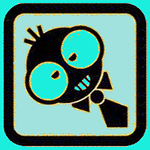Emily S. Whitten: Simon Fraser and Seven Years of Act-i-vate!
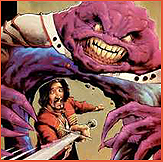 While I was in NYC a couple of weekends ago, I ended up at a Gowanus Studios party out in Brooklyn (as you do), chatting with my friend Reilly Brown and some other excellent comics folks. In the middle of all this (all this being pizza and wine, la-di-la, because I’m too fancy for beer), I learned about Act-i-vate, which some of you may have heard of, but I sure hadn’t.
While I was in NYC a couple of weekends ago, I ended up at a Gowanus Studios party out in Brooklyn (as you do), chatting with my friend Reilly Brown and some other excellent comics folks. In the middle of all this (all this being pizza and wine, la-di-la, because I’m too fancy for beer), I learned about Act-i-vate, which some of you may have heard of, but I sure hadn’t.
That’s one of the things I love about comics – even if you’ve been a fan for years, or know quite a bit about it, there’s always so much going on that you’re never going to reach the end of learning new stuff about comics – the art and the industry. (And also, if you’re me at least, the genre being so large means you don’t have to feel like a bad fan for not knowing everything about it; it’s hard!) So despite having interviewed Dean Haspiel, who was one of the founding members of Act-i-vate, since he’s moved to other projects now we had not discussed it, and I’d never heard of it.
Simon Fraser remedied that for me at the party (it’s not a real party unless you stop someone in mid-sentence, drag them into an empty studio, and do an impromptu interview, dontchya know) . You might recognize Simon as the co-creator of Nikolai Dante, “a swashbuckling adventure story set amid dynastic intrigue in a future Russia,” or as an artist who’s drawn a number of Judge Dredd stories. He’s also the current “gatekeeper,” so-to-speak, for Act-i-vate, which just celebrated its seventh anniversary, and his enthusiasm for the webcomics collective is contagious. Read on to hear more about this cool group, what they do, and what they have to offer.
Tell me what Act-i-vate is about.
Act-i-vate is a webcomics collective of comic artists producing comics primarily for themselves and for each other. Most of the comic artists who are in Act-i-vate are professionals or semi-professional. We spend much of our time trying to make a living in the industry and working hard to keep ourselves professionally employed, but a lot of the time that means making compromises to publishers, to get the job done; to get work through the doors; to get the paycheck. Which is great. If you can do that, you’re doing well. And it implies you’ve got a great deal of professional ability.
However, Act-i-vate is all about doing your signature work – it’s about the thing you really want to do, that you’ve been suppressing for a long time [so that you can make a living]. As a working professional, you may be doing four pages a week if you’re lucky, or maybe five. If you work in the evening one night a week, you can maybe get an extra page in; and that’s basically the base of Act-i-vate, is that each week – or sometimes people do a couple pages a month – you do a page, and put it up on Act-i-vate, which is a community of artists, and we look at the work and comment on each others’ work.
So you critique it?
We critique it to a certain extent. It’s a social environment, so it’s also an encouraging environment. And it’s also a big deal that even if you’re not getting a paycheck for the work, you know somebody’s waiting for it, someone’s expecting it – that means it actually gets done. Because I know for my own sake, a paycheck is tremendously motivating, but knowing that people I respect are waiting to see my next page is a big deal. So that’s the primary purpose of Act-i-vate, knowing that you’re a part of the community – because a lot of times comic artists, we work in a vacuum, we work in one room somewhere isolated.
And in the seven years since it’s started, Act-i-vate has expanded like crazy. There are over fifty members now. We’ve got members in Britain, we’ve got members in Australia, we’ve got members all over America. It’s getting to enormous size.
How did Act-i-vate start?
It started with Dean Haspiel and Dan Goldman. Dean has moved on to other projects now; he’s not directly involved with Act-i-vate anymore. He wants to do other things, like Trip City, now, which was his next thing after Act-i-vate. But Act-i-vate still exists, and is still growing. We’ve put on about ten members in the last year and a half, and there’s more and more new material going on all the time. Because there’s just such an amazing amount of talent out there, and creators who have something to say, and something they want to do. And they want to do it on their own terms, so they don’t really want to go to a publisher initially. What they can do with Act-i-vate is do the work, and make the work they want it to be, and then, afterwards when it’s completed they take it to the publisher and say, “This is it. Fait accompli!”
So when you say signature work, are you talking about a signature style of art, or more like a creator-owned signature story or piece of work, or both?
It can be anything. That’s the other thing as well, is that a lot of the time you don’t get the chance to experiment with your style. For me, Act-i-vate was all about me writing, because I haven’t really had a chance to write that much. It’s not something I get paid to do. So it was all about me writing a story, which I drew, and I was very happy with it, and by the time it came out (it took me two years to do a hundred page graphic novel), I thought it was a very good calling card for me. I thought, “That’s the kind of thing which is mine, separate.” Because I spent the last fifteen years working on something I created, but it’s owned by a company. It’s corporate. And that basically becomes my calling card, but it’s not owned by me.
So did your comic then come out to the public? Once you got your graphic novel done, did you publish it commercially?
Yes. What happened is that I have a publisher in Britain, 2000 AD, who published Judge Dredd in the 2000 AD anthology; and I’d been working for them for fifteen, twenty years. So they basically said, “We really like what you’ve done on Act-i-vate. We could publish this as well.” So they published it in one of their magazines.
Did it have some commercial success?
It did very well. The fanbase really liked it, and I got paid for it, which is excellent. And the letterer and the colorist got paid, so that’s really nice for me, because I want everybody to get something out of this, apart from just doing the work. And from there, they [2000 AD] said, “Okay, do you want to do more?” And I said, “Yes!” So right now I’m trying to find, in between my other jobs, time to get back on to the sequel of that story; because I’m doing a trilogy of stories based on these characters. The first is called Lilly MacKenzie and the Mines of Charybdis. And the one I’m working on now is called Lilly MacKenzie and the Treasure of Paros.
Sounds good! Now, when you say the letterist and the colorist got paid, are those people you picked up after you had developed it on your own?
Well, I have a very close working relationship with my colorist, Gary Caldwell, who’s wonderful. He’s tremendous; he does all my work in 2000 AD. We have a very close relationship; we fire stuff back and forth all the time. We kind of don’t have to speak to each other that much to know what we want. So Gary very generously agreed to color the thing for free, right from the start, when it was being done on Act-i-vate, and when money eventually came along, I said, “He’s got 25% of it, that’s what he owns.” Any money I get from this, he gets 25%, and that’s worked out very well for all of us.
The letterer came on when it was printed, because I lettered it originally and my lettering is kind of crap. A guy called Simon Bowland, who does lettering for 2000 AD, did a beautiful job re-lettering it. He then graciously let me use his lettering for my edition of it – I’ve done a little self-published edition of it and I’m looking for an American publisher for the collected trilogy when that eventually comes out. But I’m not going to rush that. I’m going to do my second part as I feel comfortable doing it, and then I’ll approach somebody and see if they’re interested in a third part.
As a professional versus a newer artist, are you welcomed if you’re not as known, or is it mostly when you have some professional credentials already? How does that work?
It’s all based on the quality of the work. If you come to me and I’ve never heard of your name and I see something that’s brilliant, that really knocks my socks off; then yes, absolutely [you are welcomed].
So is it a moderated community?
It’s entirely moderated. I mean, basically, you’ve got to get past me. I’m the gatekeeper. We used to have a more democratic process; we used to vote on things. But that became so conflicted and so complicated.
It is a professional community. We keep the standard very high, which means that we don’t accept very many people, but the standard of things that people have submitted is incredibly high, frankly. This is New York, and there’s so much talent around. And it’s people who really want to do something of their own, and they want to do it among people they respect. That’s a big deal, I mean, I feel tremendously enthused by the fact that the people who are working on Act-i-vate are so good, and they’re doing such different things. Some of it, if you go on the site, you can’t easily see as commercial; but it’s got its own thing going on there. They’re really trying something different and new and exciting.
I think the market will catch up with this. Right now the American comic market is in this tremendous period of expansion. It’s very low-level and there’s kind of not much money in it, but there’s tremendous amounts of material being generated the last couple of years. It’s very, very exciting. And I think the material on Act-i-vate is finding its audience online, and it will find its audience in print; it will find its audience in different media and other ways, and that’s great.
As someone who’s been around Act-i-vate for some time, have you seen others get something commercial through their work on Act-i-vate? Can you give examples?
Oh yes. Kevin Colden – his book Fishtown was done on Act-i-vate. He actually applied for a Xeric Grant to do the book as a small press thing, and he got offered it; but he said, “I would rather put it on Act-i-vate.” Which is a big measure of faith to us. And he put it on Act-i-vate and he got a lot of attention for it – it’s about a real event which happened in Philadelphia. And he then took it to IDW and IDW made a beautiful book of it. And he got nominated for an Eisner Award for that.
Roger Langridge has a comic on Act-i-vate, and that went to one of the publishers. There’s also Warren Pleece. He’s one of the Pleece brothers, who, when I was starting out in comics in Britain, were basically our Hernandez brothers; Warren and Gary Pleece. They just put out a compilation of their old work, The Great Unwashed, through Escape Books in America. It’s a fantastic book. It’s so…it’s like listening to that Kinks song. It’s got that kind of weird downbeat aesthetic, like The Smiths or something, and that’s very characteristic of them. And they do this beautiful story on Act-i-vate called Montague Terrace, which is also like that – and that’s coming out through Jonathan Cape in London this year.
We have Darryl Cunningham, who has become something of a celebrity recently. He’s done Psychiatric Tales, Books 1 & 2; he actually works in a psychiatric hospital, and Psychiatric Tales is really good, fascinating stuff. Darryl’s thing is basically that people don’t really understand what a lot of these mental illnesses are, and how they function or manifest themselves. He spends a lot of time with these people, so he basically took it upon himself to explain a lot of these common mental illnesses. And he did it in such an elegant way; because Darryl’s a beautiful cartoonist. It came out through Blank Slate in the UK and Bloomsbury in the US.
He’s done a new book called Science Tales, through Abrams, which is all about debunking science myths. So like the fake moon landing and all of that. There was a really horrible story a while back about a guy called Andrew Wakefield, who basically said that the measles, mumps, and rubella vaccine caused autism, which was quite shocking; and he was promoting this theory and scared a lot of parents from vaccinating their children. A lot of celebrities got involved, like Jenny McCarthy, and she started promoting this, and she’s still promoting it, even though Wakefield has been discredited entirely, and medical journals have basically come out and said, “this is absolute nonsense, it’s complete charlatanry.” But he was basically using it to promote himself. As a result now, some kids are not getting vaccinated for these things, which is very, very serious. If kids get these diseases when they’re children, it can affect the rest of their lives. Darryl did a story about that, which is brilliant. And he’s basically dealing with all the big mythologies.
He’s doing a story about Ayn Rand right now, on his website; he’s a great debunker. Ayn Rand is fascinating; I think he came down on the side that he felt sorry for her, because she had such a horrible life, and it was just depressing. She was obviously an uncompromising character; for the era, it’s remarkable that such a person as that existed.
What would your advice be for an artist who wants to be involved in Act-i-vate, and do you have some advice you’d like to share with the people who are still looking to become professionals, or more recognized as such?
At Act-i-vate we’re interested in seeing anything that’s unique and individual. We tend not to go for the more established genres like fantasy and science fiction; and not superheroes, because that’s well-represented. The other thing about Act-i-vate is that this is our thing, and we’re very happy with it, and we sometimes get new members, and that’s fine; but [running a webcomics collective is] relatively easy to do. I mean, we’ve survived for seven years. It doesn’t cost much to make a webcomics collective. All it really requires is a bit of effort, and a bit of going out there and finding people. And if you have an idea and you have something you want to do – we encourage people not just to apply to Act-i-vate, but set up their own collectives.
I think we all have our own points of view, and Act-i-vate has a very specific point of view of its own, and I think we’d like to see more people coming out with their own things, and different things. The more we have the better; the stronger the community of independent webcomics is. We haven’t really concentrated on making money out of Act-i-vate; because that’s not really what we do. We’re not a publisher; but we encourage; we’re trying to help our authors to get their work done. Because a lot of these things don’t make that much money. There’s money in digital comics to a certain degree, but it’s microscopic in comparison to what a good print book can get. I think what we’re trying to do is encourage good-quality work. When that happens, hopefully the audiences will come find it. Which I think is happening.
For example, we have a really good comic recently called Pregnant Butch, which is about a lesbian couple having a baby, which is hysterical; it’s so good. It’s by A.K. Summers, out in Rhode Island, and this is her first comic. She’s fabulous; she has such a great sense of humor, and such an innovative way of storytelling. And she’s not afraid of the darkness and the fear; because it can be terrifying, what’s happening. The fun thing, what I love, is the fact that she found an entirely new audience for her work and she had people commenting on her story who had never come to Act-i-vate before. She had established people who are interested in the subject, and also people who came in from outside who had never considered reading a comic about pregnant lesbians. And the fact is, it’s such a wonderful comic, it didn’t matter.
So to sum up, Act-i-vate is for people who want to, not just “get into the market and make money,” but who want to do their own thing, get encouragement on their work and comments, and have a community.
Yes. It’s about doing good comics. We’re all about good comics. I mean, there are lots of other aspects of comics and making a living and so forth, which we can help with, and we’re always available as colleagues to help with that.
Most of that tends to orbit around this studio complex here; there are a lot of Act-i-vate people in here. Act-i-vate is based in New York, and it tends to be Brooklyn-centric. But we reach out; we’re trying to get as wide a reach as possible. I’d like to get people from the West Coast, as well. We’ve got some people in D.C. Sam & Lilah is one of our strips on Act-i-vate, and the writer of that is in D.C. That’s Jim Dougan, who’s a big DC United fan and I think has had some press with them. So we’ve got people from all over, and we want to continue with that.
• • • • •
Thanks very much to Simon for this great interview! I have to confess that since learning about the site, I’ve spent more than a few minutes (eep!) reading some of the comics, and they really are excellent. So check out Act-i-vate for some new reading material, and if you’re a creator looking to get some support, encouragement, and comments from other pros as you work on your own project, consider getting in touch with Simon and submitting some work!
Oh, and until next week: Servo Lectio!
TUESDAY AFTERNOON: Michael Davis
WEDNESDAY MORNING: Mike Gold

